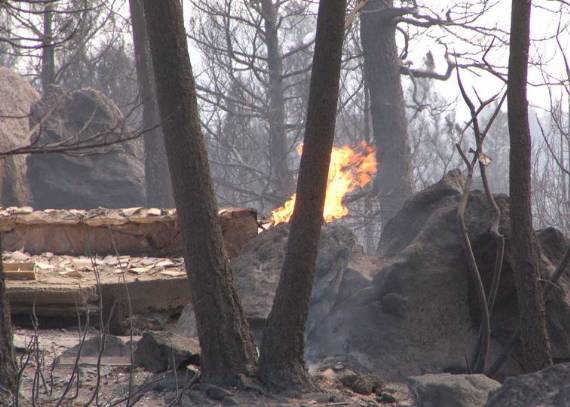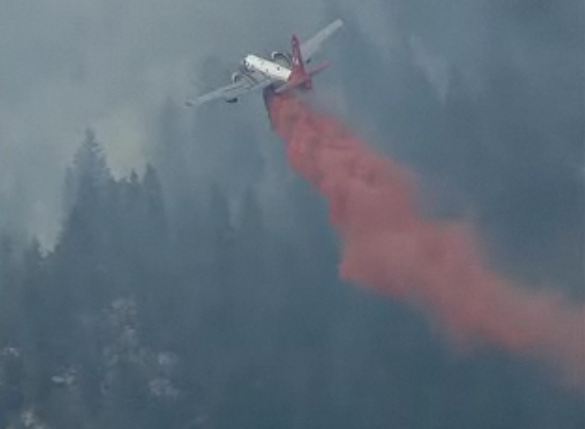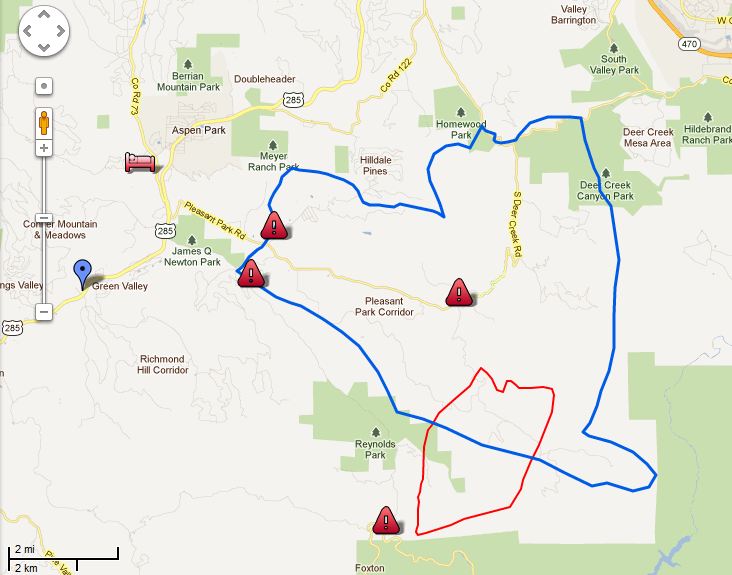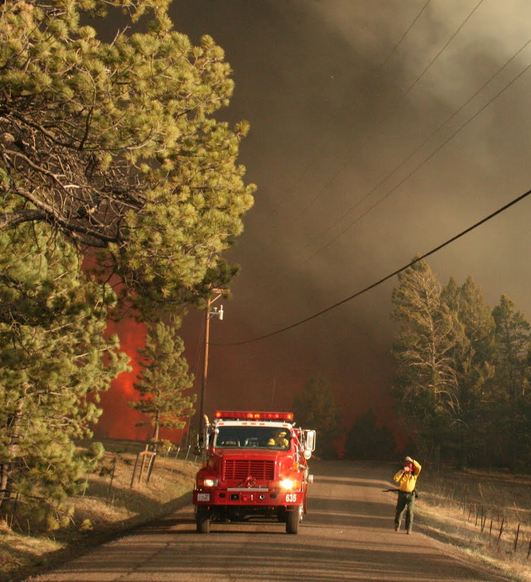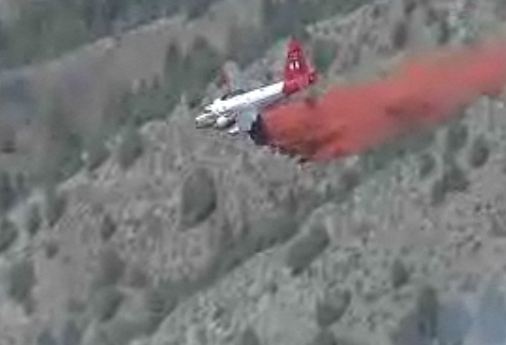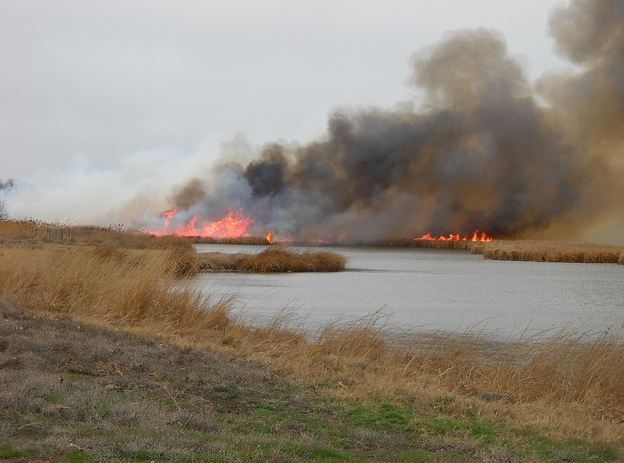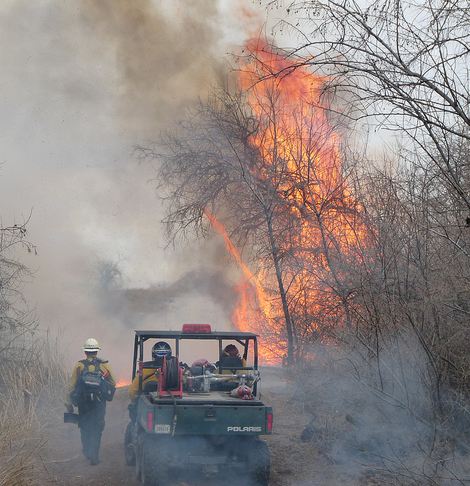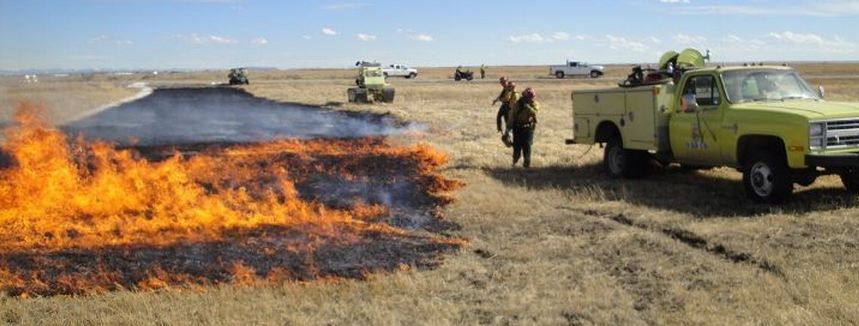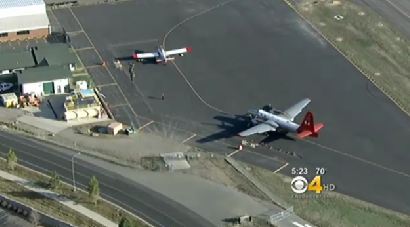
(We will update this throughout the day on March 28 as developments occur.)
UPDATE at 12:30 p.m. MT, March 28, 2012
The reported size of the fire has been changed from 4,500 to 3,790 acres. This latest size was calculated from an infrared mapping flight that occurred at 10:30 p.m. on March 27.
The Jefferson County Sheriff’s office has reduced the number of damaged structures from 28 to 27. One of the recorded addresses was not accurate.
We have an audio recording of radio traffic from an incident that occurred on March 26 on the fire when four Jefferson County Sheriff officers were entrapped in the fire. They escaped unhurt, but the audio is gripping.
The Denver Post has some fascinating video that was shot by residents driving out of the fire. They said they did not receive a reverse 911 phone call warning.
=================================================
UPDATE at 9:23 a.m. March 28, 2012
The Jefferson County Sheriff’s Office has updated their map of the fire with data from 8:20 p.m., March 27. The fire perimeter in red. The blue line is the evacuation area as of 2:00 p.m. on March 27. We expect they will give us an updated acreage later.

==============================================================
UPDATE at 8:45 a.m. March 28, 2012:
The Jefferson County Sheriff’s Office released some updated information at 8:30 a.m. on Wednesday:
Overnight the fire was relatively stable. Fire crews made progress through the night in protecting structures. Today’s strategy is to gain containment around the fire while continuing to protect structures.
Today’s fire behavior is expected to be similar to yesterday but with slightly higher winds. The winds could result in more robust fire activity. The fire will also most likely become more intense as the temperature rises throughout the day. The fire has continued to exhibit a tendency to start spot fires in a wide area.
[…]
The Jefferson County Sheriff’s Office will continue to man road blocks around the fire perimeter. At this time we are not allowing anyone back into the evacuated regions.
The Sheriff’s Office said the estimated size is still 4,500 acres and that 28 structures have been damaged.
===========================================================
(Original post at 7:30 a.m. MT, March 28.)
The Lower North Fork fire that is southwest of Denver and seven miles southeast of Conifer, Colorado, was relatively quiet during the night. The last official acreage that was released by the Jefferson County Sheriff’s Office for the wildfire was 4,500, and they reported that 23 homes have been damaged. An elderly couple was found dead near their home and one resident within the burn area is missing.
The map of the fire shows the fire perimeter in red, as of 11:00 p.m. on March 26. The blue line is the evacuation area as of 2:00 p.m. on March 27. We will provide an updated map as more information is provided.
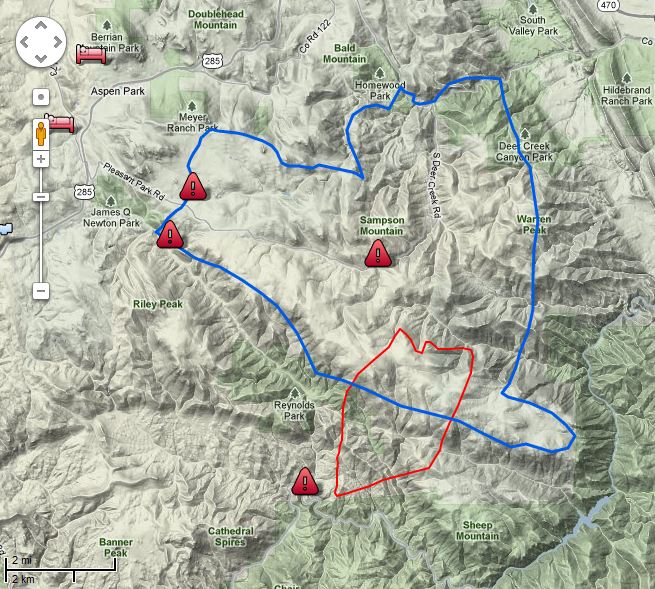
The firefighters’ strategy on Wednesday is to switch from point protection to constructing fireline to begin containment of the fire. They had hoped to do that on Tuesday, but the weather and fire behavior did not cooperate, pushing them back into a defensive and structure protection mode. Containment is still listed at zero percent, and 900 homes are still under a mandatory evacuation order. On Wednesday three air tankers (two P2Vs and one single engine air tanker) and four helicopters (including two National Guard Blackhawks) will be working on the fire. More aircraft are on order.
The Rocky Mountain Area Coordination Center reported Wednesday morning that Rich Harvey’s Type 1 Incident Management Team arrived and in-briefed at 8:00 p.m. on Tuesday and will assume command at end of the shift today. The RMACC says 3,790 acres have burned. This reduction in size is probably due to more accurate mapping as a result of the aircraft that Tuesday night used infrared equipment to determine the fire perimeter.
On Tuesday the Colorado State Forest Service released a statement saying a prescribed fire they ignited on Wednesday, March 21, escaped control on Monday, and investigations are underway to determine the cause of the Lower North Fork fire. The Denver Post earlier on Tuesday quoted Jacki Kelley, a Jefferson County Sheriff’s Office spokeswoman, as saying the fire originated from a controlled burn conducted by the Colorado Forest Service.
This first video is from a 6:00 a.m. newscast on March 27.
The video below is from March 26.
9news.com occasionally has live video reports about the fire.
Read Wildfire Today’s March 27 coverage of the Lower North Fork fire. and the March 29 article.



